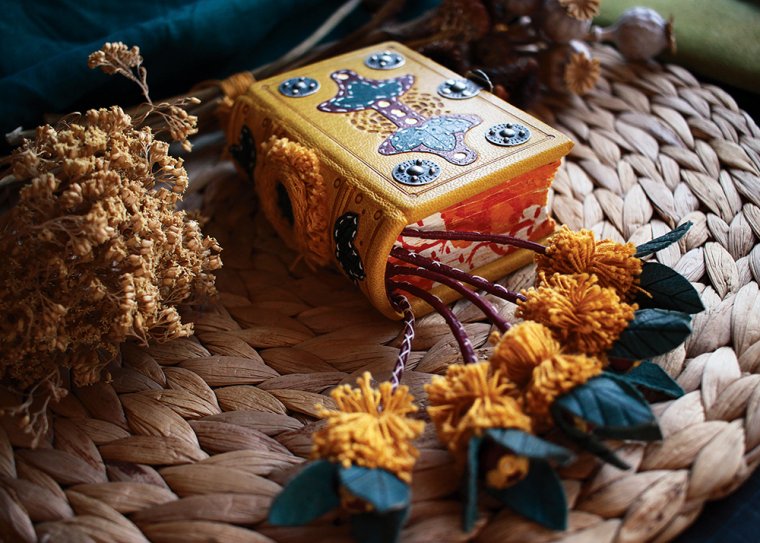A book that blooms. The enchanted codex of a superstitious villager. An illuminated scroll that unspools with the story of a hero doomed to kill his own king. These are just some of the extraordinary artist’s books of Stopan, a bookbinder in Bulgaria who draws on his country’s craft traditions to create artworks “both in and out of folklore.” While Stopan began making books in 2013, it was only more recently that he began to explore the more fanciful possibilities of the medium. “I came to the realization that a book has a lot more capacity than just holding text,” says Stopan. “I’m striving to find out what else I can fit within it as a vessel for expression.” To realize these ambitions, Stopan turned to two collaborators he knew well: his mother and father, Gergana Daskalova and Ivo Daskalov. “My father works with metal, gemstones, and wood—rather hard and monochrome materials,” explains Stopan. “He’s also very conservative and strict in his designs. My mother, on the other hand, works with very soft and colorful textiles and yarns, favoring a more abstract or asymmetrical visual style. I consider myself somewhere in between and try to balance each of our tasks to produce something harmonious.”

Bound in “a flowering body of goatskin, cotton and silver,” Stopan’s Harvest Book contains the lyrics of songs of tribute to the harvest and the sun. (Credit: Image courtesy of the artist.)
Every book, including Harvest Book, shown above, begins in Stopan’s Sofia studio, where he tries to translate “a persistent feeling” into the “shape of a book,” before developing exterior decoration and, finally, interior text, sometimes mailing the book to his parents’ town of Pleven for their contributions. Stopan, who was officially named a master bookbinder by the Bulgarian National Craft Chamber in 2018, says his work makes him sometimes feel he is “going backward in time, to when bookmaking traditions in Bulgaria were interrupted.” Yet the books themselves create “an active dialogue with the past and a broken tradition,” each a “tangible proposal” for how these time-honored arts might birth something fantastically new.








